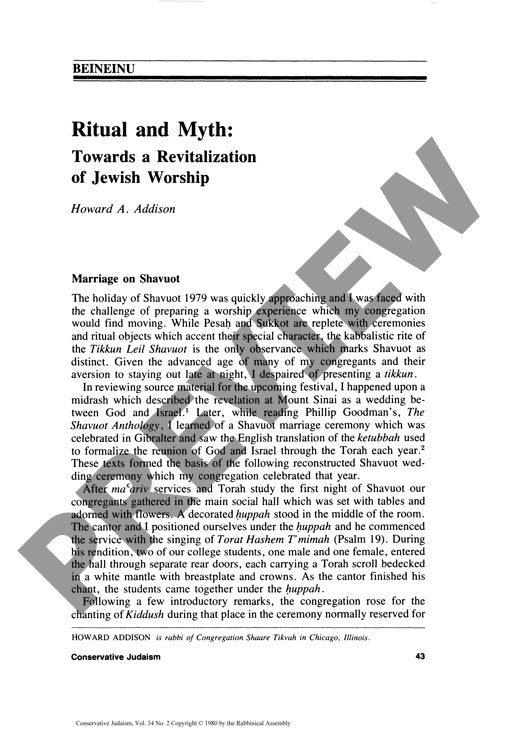Ritual and Myth Towards a Revitalization
Couldn't load pickup availability
Ancient mythological worship possessed a transformative power through its concrete rituals, immediate experiences, and sacred transformation of time and space - elements that many contemporary Jewish worship services struggle to replicate. Drawing from a case study of a reconstructed Shavuot wedding ceremony based on midrashic sources depicting the Sinai revelation as divine marriage, this research investigates how these historical elements of transformative worship can be strategically reincorporated into modern practice. Through comparative religious analysis and practical liturgical experimentation, the research identifies key challenges to worship effectiveness, including secularization, disconnection from agricultural cycles, and diminished ritual concreteness. The findings demonstrate that mythically-based ceremonial re-enactments successfully restore worship's transformational character by providing concrete, immediate experiences that engage congregants through familiar life-cycle paradigms. Strategic augmentation of traditional prayer services with aggadic myth-based rituals, exemplified by renewed observances like the Tu BiShvat seder and Holocaust-to-Independence Day commemorations, can effectively recapture worship's capacity to create sacred time and space. This approach revitalizes contemporary Jewish religious experience while preserving established liturgical forms.

More Information
-
Physical Description
-
Publication Information
Published 1980
ISBN
-
Publication Credits
Howard Addison

